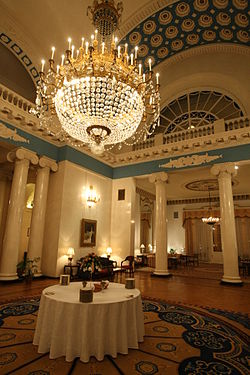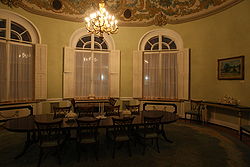
Back سباسو هاوس Arabic Spaso House German Spaso House French בית ספאסו HE Спасо-хаус Russian Спасо-хаус Ukrainian








Spaso House is a listed Neoclassical Revival building at No. 10 Spasopeskovskaya Square in Moscow. It was originally built in 1913 as the mansion of the textile industrialist Nikolay Vtorov. Since 1933, it has been the residence of the U.S. Ambassador to the Soviet Union, and since 1991, to the Russian Federation.[1] The building belonged to the USSR and later Russia and, under the 1985 lease contract, the U.S. was supposed to pay 72,500 Soviet roubles per year, which by 2001 was the equivalent of about $3, which the U.S. had failed to pay in 1993.[2] In 2004, the two sides concluded a new 49-year lease that was said to be based on a joint assessment of the property's value; the rent rate was not disclosed.[3][4]
- ^ Spaso House; 75 Years: A Short History. P. 8.
- ^ Row over Moscow embassy rent BBC, 26 March 2001.
- ^ Spaso House Not Low-Rent Anymore The Moscow Times, 13 October 2004.
- ^ How much would fictional houses cost in real life? CNN, 28 April 2017.